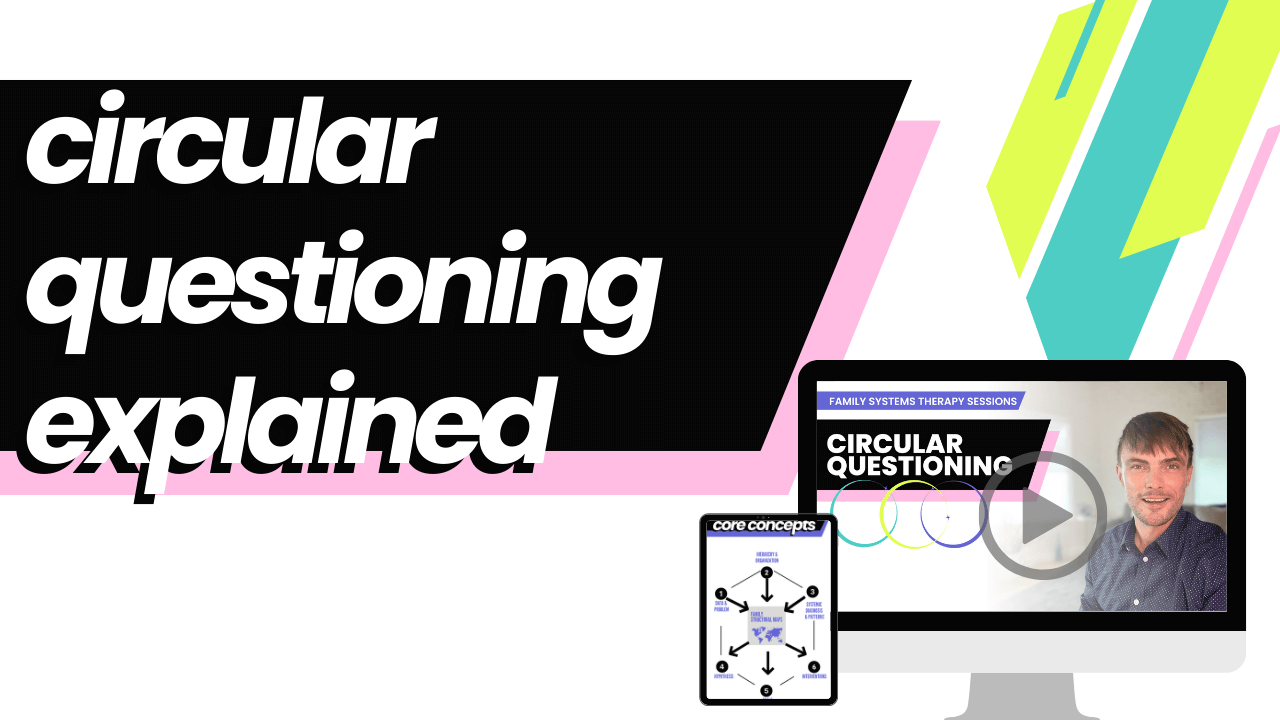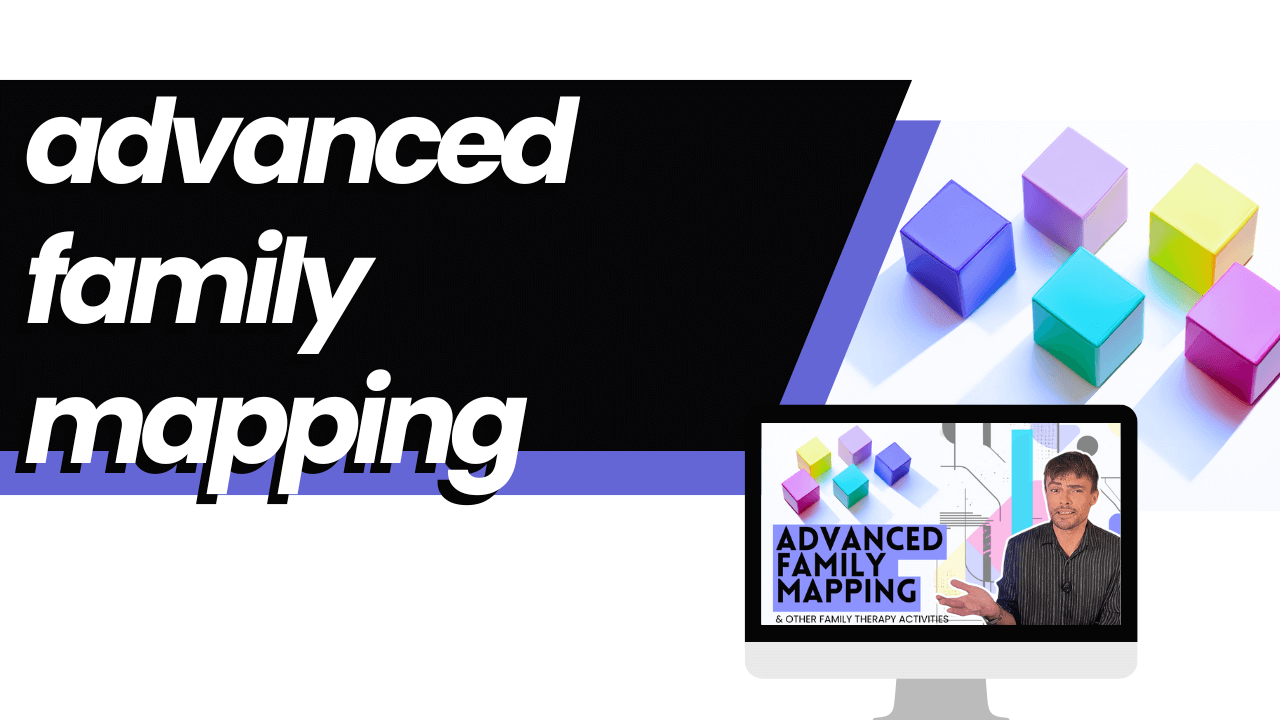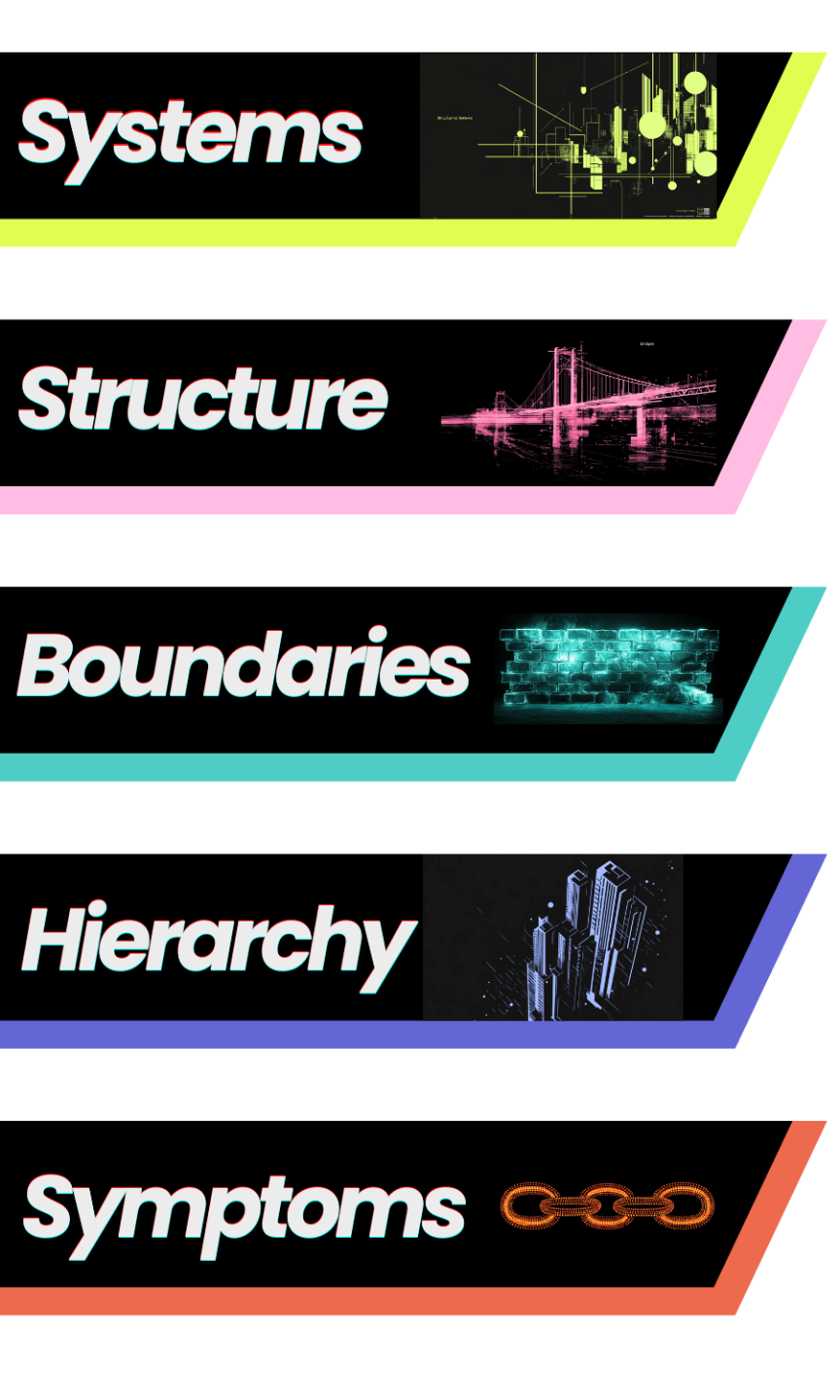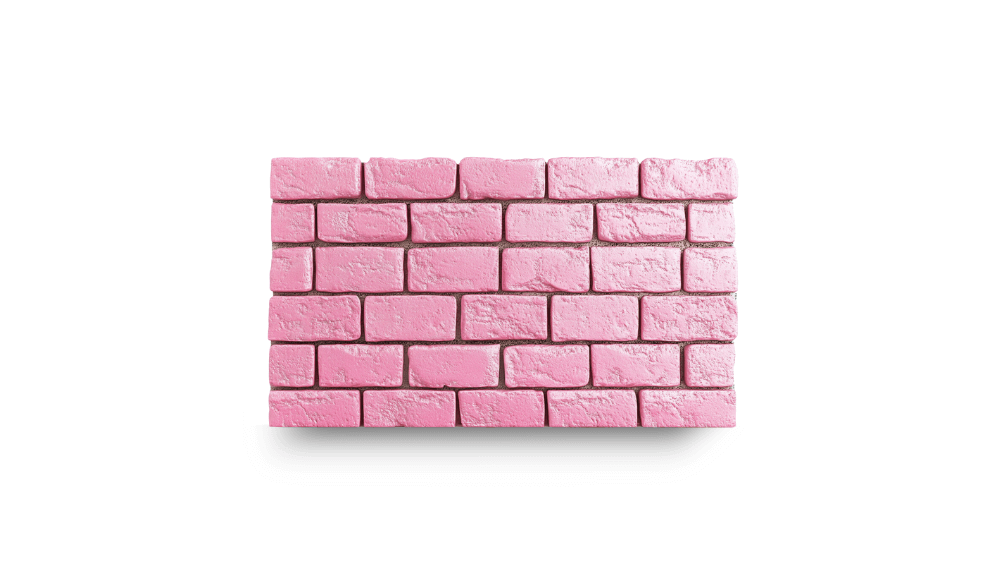
The Core Concepts of Structural Family Systems Theory & Therapy To Know
Structural Family Stystems Therapy is one of the more predominant family counseling theories and an approach to family therapy in which family members are viewed as interconnected emotional units. Depending on how these emotional units are organized, they create patterns of interactions in relationships which significantly influence individual behavior and mental health.

It took me a while to really get what that means.
Here's how I explain it when I teach graduate students:
If a company is going to be successful, it needs to be organized. There's usually a CEO at the top of the hierarchy, and people with less influence or 'power', below them. But they all work together towards a common goal, and communicate, have roles and generally know what they're doing and why.
When a company has a decent organizational structure, it's much more likely to be successful.
Hopefully you're in agreement that if a company is organized, has a decent structure with someone in charge at the top, then it's much more likely to make money, or save the whales - ie reach to reach whatever its goal is.
A family doesn't quite have the same goals of making money or saving the planet, but it has a function. Normally that function is to raise children who can leave home at the right age and live independently.
The Unique Mind Of Salvador Minuchin, founder of Structural Family Systems.
Salvador Minuchin was an Argentine-American psychiatrist and one of the most influential figures in modern family therapy. He pioneered and developed Structural Family Therapy, an approach that examines how hidden rules and hierarchies shape the ways families interact. By helping families adjust these structures, Minuchin’s work made it possible for them to break stubborn patterns and build healthier relationships.
- He saw every family’s arguments as a rehearsed dance, ready to be re-choreographed for deeper connection and understanding.
- With an Argentinian directness, Minuchin took on chaos headfirst—revealing the hidden rules that keep families stuck and reshaping them for real change.
- Therapy wasn’t just talk to him—it was boundary-shifting theatre where members stepped into new roles, forging stronger bonds with every dramatic act.

What is the structural theory of the family?
Central to the structural theory of the family is the idea that in order succeed or reach its goals of raising happy, healthy, well-adjusted young adults, it has to have a healthy organization or hierarchy, much like a business.
A healthy organization for a family consists of appropriate leadership, usually in the form of parents or caregivers, who create a healthy hierarchy and promote healthy boundaries, communication and structure in order for it to function and ultimately reach its goals.

Structural therapy implies that a healthy family structure is more likely to raise successful children, and conversely, if there are irregularities or the fstructure is unhealthy, then they are more likely to see dysfunction. Dysfunction appears in the form of symptoms or mental health problems, usually in the children, we call them the Identified Patient or IP.
What is the structural approach in family therapy?
The structural approach to family therapy focuses on the invisible rules that govern the families structure, which influences how members interact with each other.
Think of it like examining the blueprint of a house – the therapist looks at how the system is "built" and how its various rooms (subsystems) connect and function together.
These subsystems might include the parental subsystem (parents working together), the sibling subsystem (relationships between children), and various other combinations of members.
A healthy organization for a family consists of appropriate leadership, usually in the form of parents or caregivers, who create a healthy hierarchy and promote healthy boundaries, communication and structure in order for it to function and ultimately reach its goals.
What makes the structural approach particularly powerful is its focus on the present rather than the past. While other therapeutic approaches might delve deep into history, structural therapists primarily work with current interactions and patterns they can observe and modify in the therapy room. They believe that changing these present-day patterns will naturally lead to improved functioning and individual well-being, reducing mental health problems in relationships.


Family Systems Therapy Training
My full family systems training course that takes your from the first call to interventions to use. $59.99

Circular Questioning Explained
How to use Circular Questioning in your sessions to get results with a family or couple. $9.99

Advanced Family Mapping Course
How to use Family Mapping as a professional but also as a family therapy activity. $19.99

An online structural family systems theory training course.
An online course that goes beyond theory to share all the tools, techniques, and insights you need to run family therapy sessions with skill and confidence in your private practice. A practical road map for graduate level students, therapists or anyone interested in usinglearning more about how to do structural family therapy.
Sign Me Up For More Family Systems
What are the basic assumptions of structural family therapy?

Systems: The first fundamental assumption is that families are systems with interconnected parts, not just collections of individuals. This means that when one member experiences a problem, it both affects and is affected by the entire unit.
Structure: A second key assumption is that problems often stem from within structural issues rather than individual pathology. The structure refers to the invisible set of rules, roles, and patterns that govern how members interact.
Boundaries are a key component, theese are the invisible emotional and psychological rules that separate different subsystems. These boundaries can be rigid (allowing too little contact), clear (allowing appropriate contact), or diffuse (allowing too much contact).
Hierarchy is particularly important in SFT. A well-functioning system has a clear generational boundary, with parents in charge and children having age-appropriate responsibilities and freedoms. Older children might have more responsibility, but are still not as influential as caregivers.
Symptoms: Dysfunction in a family emerges as behavioral or mental health symptoms in one or more members, usually a child. This is seen as a problem not in the individual. They're called the 'IP' - 'Identified Patient, because actually the whole system is being treated.

What are the goals of structural family therapy?
A structural family therapist wants to help improve family relationships and overall health, help create healthy relationships, improve communication, and remove symptoms in 'troubled' adolescents or children. It's a process that starts with understanding dynamics and interactions and then targeting specific patterns that need to be changed.
Modifying The Role Of The IP: Often a child or teenager, is "the problem." Instead of accepting this view, structural therapy works to help the client understand that the IP's behavior is actually a symptom of broader patterns. For instance, if a teenager is acting out, rather than focusing solely on their behavior, the therapy explores how interactions might be contributing to or maintaining these actions.
Clarify Boundaries: establishing clearer boundaries is fundamental to creating a more functional family system. Think of boundaries like invisible fences that define relationships between members and subsystems. When boundaries are too rigid, members become emotionally distant; when they're too diffuse or enmeshed, there's insufficient independence. The therapist helps families find the right balance, ensuring that parents can work as a team while maintaining appropriate separation between parent and sibling relationship in their subsystems.
Increasing the scope of communication, the third goal, involves improving communication by helping the system develop more effective ways of expressing themselves and understanding each other. This might mean helping an authoritarian parent develop a softer approach, teaching system members to express feelings directly rather than through behavior, or helping parents communicate limits and expectations clearly to their children. The focus is on creating patterns of communication that support both connection and healthy autonomy.

Improving conflict resolution skills, builds on the previous objectives. Many families either avoid conflict entirely or handle it in ways that damage relationships. The therapist helps families develop new ways to address disagreements constructively, teaching them to negotiate differences while maintaining respect and connection. This might involve learning to listen actively, express needs clearly, and work together to find solutions that consider everyone's perspectives.

What are boundaries about in structural family therapy?
Boundaries in relationships are far more complex than simple rules or limits - they're like invisible force fields that govern how system members interact with each other. When boundaries between parents and children become too porous, emotions can flow freely between them, creating situations where a child might take on their parent's anxiety or a parent becomes overwhelmed by their child's every mood swing. Picture a mother who becomes completely distraught whenever her teenager is upset, or a father who shares all his marital problems with his young son. While these examples might seem like closeness or trust, they actually represent boundary violations that can burden children with adult emotional responsibilities they're not equipped to handle. Healthy boundaries, on the other hand, are like a semi-permeable membrane - allowing for emotional connection and support while still maintaining appropriate separation between parent and child roles.

Porous Boundaries
Porous or diffuse boundaries lead to enmeshment, where family members are overly involved in each other's lives. This might look like a mother who reads her teenage daughter's diary or parents who share all their marital problems with their children.

Healthy Boundaries
Clear boundaries, which represent the healthy middle ground, allow for both emotional connection and appropriate independence. In a family with clear boundaries, parents might discuss their financial concerns privately but share age-appropriate information with their children. Siblings might have their own friendship circles while still enjoying activities together.

Rigid Boundaries
Rigid boundaries create excessive emotional distance between family members, leading to disengagement. You might see this in families where teenagers rarely communicate with their parents, spending most of their time alone in their rooms.
Family Intervention: Techniques Of Structural Family Therapy
Structural therapy is an evidence based treatment model that helps families seeking treatment with a variety of mental health issues.In clinical practice, we've seen how the right therapeutic tools can create positive change and transform family relationships. Here are some of the powerful techniques our structural family therapists use to help families thrive:
Family Mapping - is one of the most useful tools and a terrific family intervention that a structural family therapist will use in a family therapy session. The therapist observes how the family interacts and creates a visual map of the family unit that maps out the family hierarchy, how the family operates including unhealthy and healthy relationships. More importantly attempts to identify patterns in a dysfunctional hierarchy that maintain and perpetuate unhealthy family dynamics.
Enactments Family therapists know that real change happens through action, not just talk. That's why we create opportunities for families to practice new interaction patterns right in our sessions. Like a rehearsal for life, enactments help improve communication, healthier interactions and build confidence in handling challenging situations together.
Reframing: Sometimes the key to addressing mental health issues lies in seeing behaviors differently. Structural family therapists help families understand challenging moments not as problems, but as attempts to connect or cope. This shift in perspective often unlocks new possibilities for healing and creating healthier interactions.
Restructuring: Like skilled architects, we help families design and build healthier boundaries that support better family functioning. This might mean helping parents align their approach, teaching age-appropriate independence, or finding the right balance within your unique structure.


An online structural family systems theory training course.
An online course that goes beyond theory to share all the tools, techniques, and insights you need to run therapy sessions with skill and confidence in your private practice. A practical road map for graduate level students, therapists or anyone interested in learning more about how to do structural therapy.
Sign Me Up For More SystemsStructural Family Therapy: Circular Questions
Circular questioning is a therapeutic technique used in therapy to explore relationships, patterns, and dynamics within a system. Rather than asking direct linear questions, the therapist asks questions that reveal how different members' behaviors and reactions influence each other in a circular pattern. Watch the video for more information.
For example, instead of asking "Why does Jimmy skip school?", a therapist might ask "When Jimmy stays home from school, what does Mom typically do first? And how does Dad respond to Mom's reaction?" This helps uncover the interconnected nature of family dynamics and how behaviors maintain certain patterns over time.
Circular Questioning Examples
- "When your teen seems anxious about school, who notices first? How do other family members respond when that person expresses concern?"
- "If we asked your daughter who gets most worried when she's upset - Mom or Dad - what would she say? How does that person's worry affect her anxiety?"
- "On days when there's less conflict at dinner, what's different about how each family member interacts with each other beforehand?"
- "When Dad works late, how does that change Mom's evening routine with the kids? How do the kids respond differently to Mom during those times?"
- "Who in the family is most likely to try to make peace after an argument? What do others do in response to that person's peacemaking efforts?"
- "If your son's teacher were here, what would they say about how his behavior changes depending on which parent attends school meetings?"
- "When your daughter starts withdrawing to her room, what changes have you noticed in how you and your spouse communicate with each other?"
- "How has the time your family spends together changed since your son started having difficulty at school? What's different about how each family member interacts now compared to before?"
The Family Systems Videos
If you've not found my YouTube Channel yet, check out some of the Structural Family Systems Training Videos I've made here and learn more about how my weird head works, and, more importantly, family therapy.







